From Teaching to Writing

TeachingBooks asks each author or illustrator to reflect on their journey from teaching to writing. Enjoy the following from Drew Beckmeyer.
Making Projects Feel Attainable
by Drew Beckmeyer
Working with kids on a daily basis, I need to constantly remind myself of how to scaffold projects. I work with young children, but even young children can feel self-doubt or anxiety, and can get defeated when trying to make something that doesn’t live up to their expectations. Being transparent about steps, process, and failure is really important in my teaching. That said, my other job often feels at odds with this. As an Illustrator, I’m essentially there to make things look pretty, and when things look pretty and polished, they can sometimes feel magical. Not magical in the supernatural sense, but in the sleight of hand sense. And sleight of hand is basically the opposite of teaching.
In my illustration for picture books, I really want to find a middle ground where the process is naked, but the result is still attractive. Attainable. Doable. I never want a kid to look at it and think, “That guy knows some tricks I’ll never learn”, or worse,“I can’t do that”. So I use materials that most classrooms have on hand, and I try to present them in as transparent a way as I can.
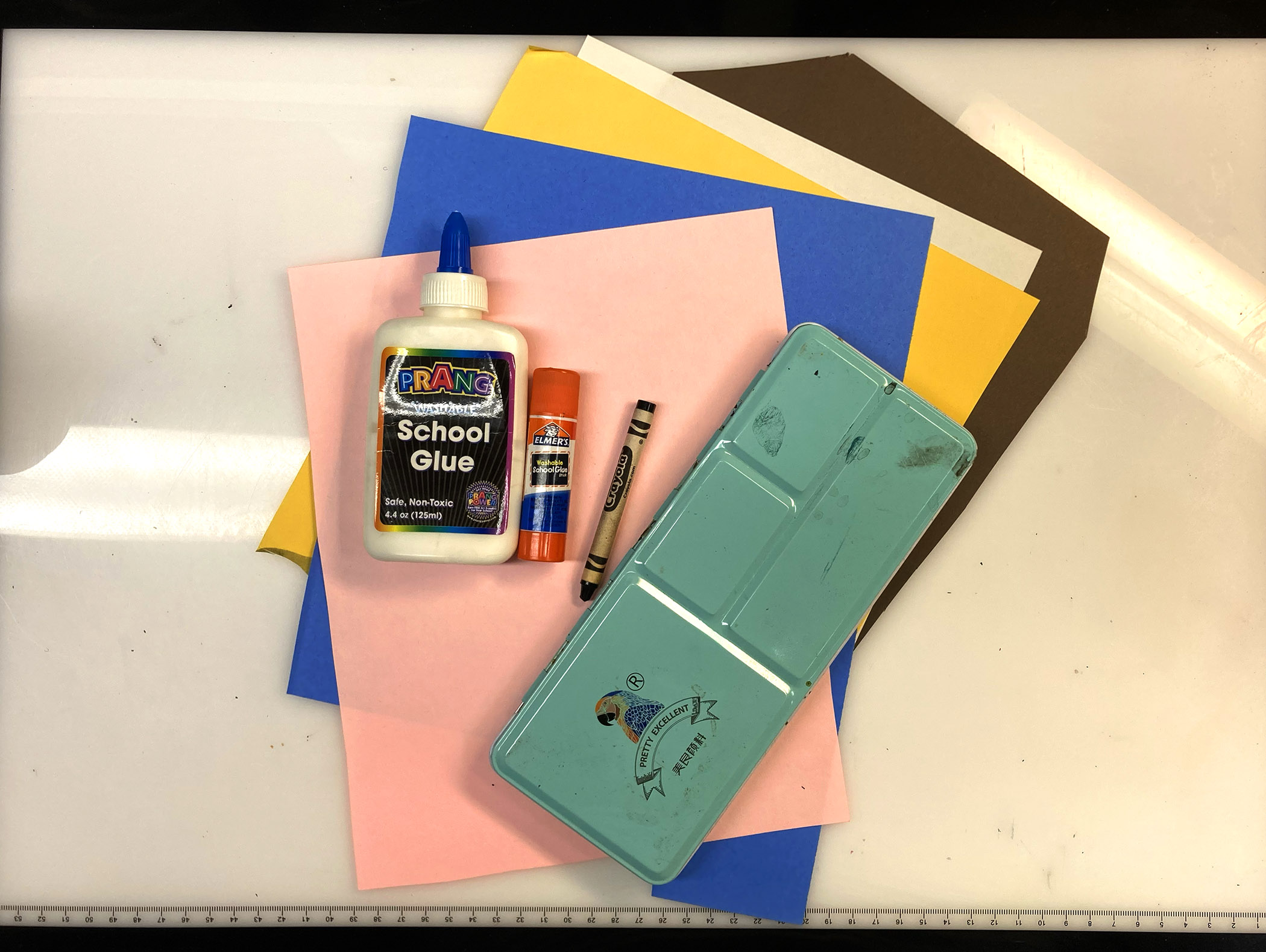
I actually don’t love writing about myself, or maybe it’s just easier to write a little lesson. I thought I could show how I built the illustrations for my latest book I Am a Tornado. It’s easy, I promise. It might be fun for kids or adults to try too.
Step 1. Pick a background piece of paper and set it aside- I’m going to use pink.
Step 2. Make a mess- we are going to need some textures and colors. The more options the better. If I was doing this with a class, I might have a dirt table, a flicking table, a bright color table, a fun texture table, a scribble table that kids would rotate through.
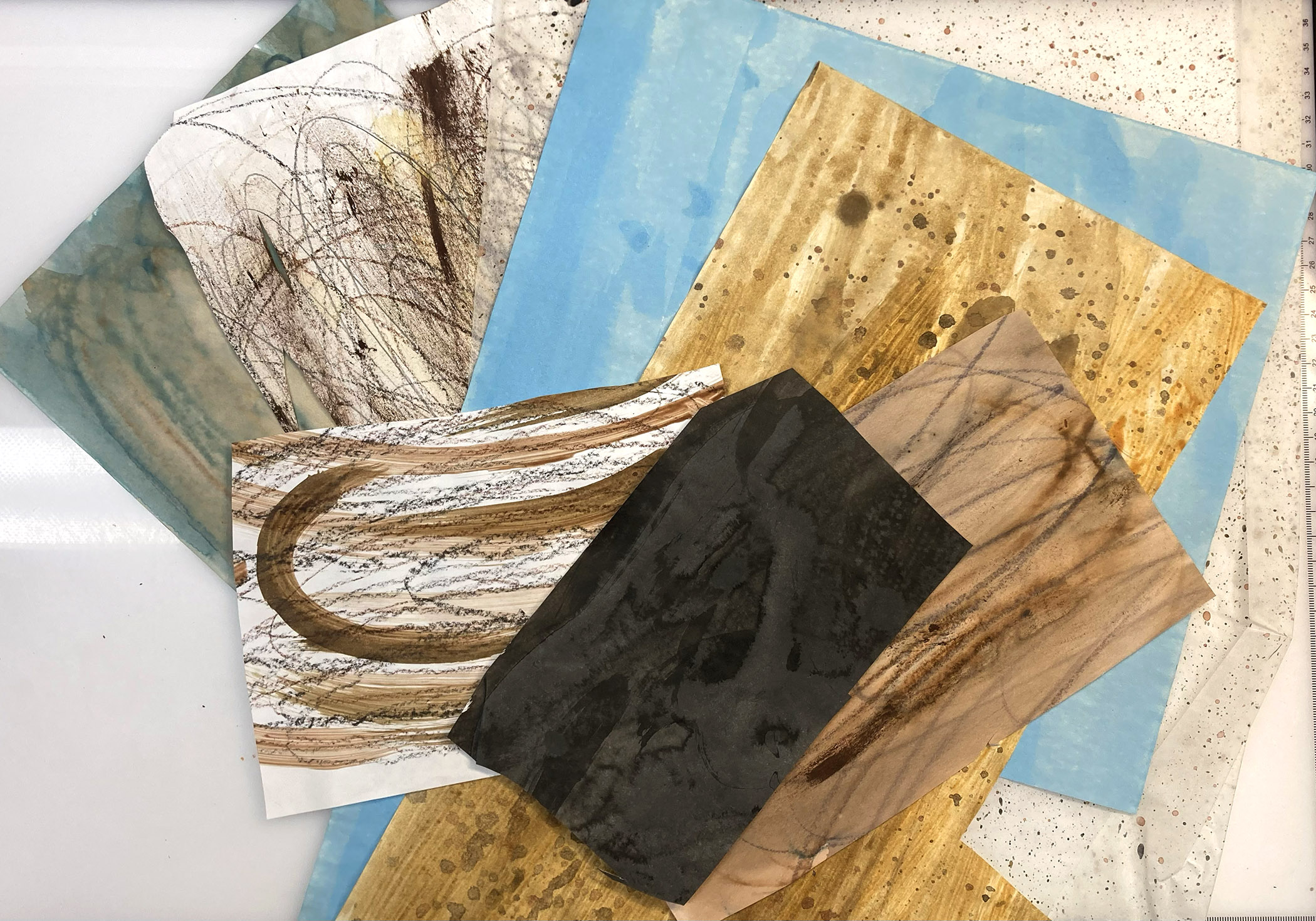
Step 3. Cut out 2 or 3 long wavy lines and one straight one. These will be hills and the ground
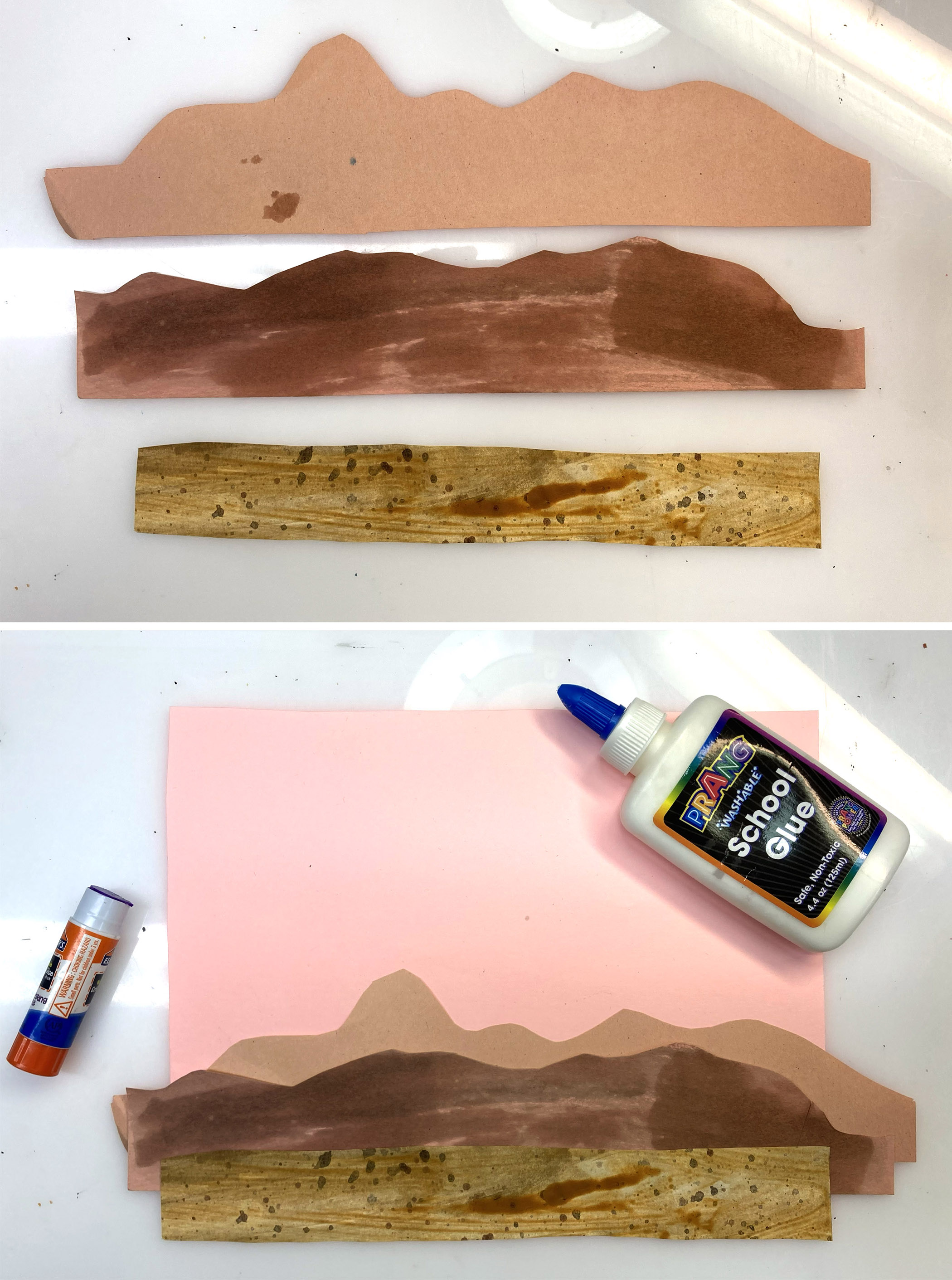
Step 4. Layer your pieces. The furthest hill goes on first, then the next, then the ground piece
Step 5. Make your tornado. The size is up to you. I make a triangle and then cut down the corners.

Step 6. Cut out two ovals for eyes. Scribble some pupils in. Make some curvy strips or just draw them. Maybe add some speckles for dust.

Step 7. Eyebrows. The most important part. Play with them until you figure out the emotional state of your tornado, then glue them down.
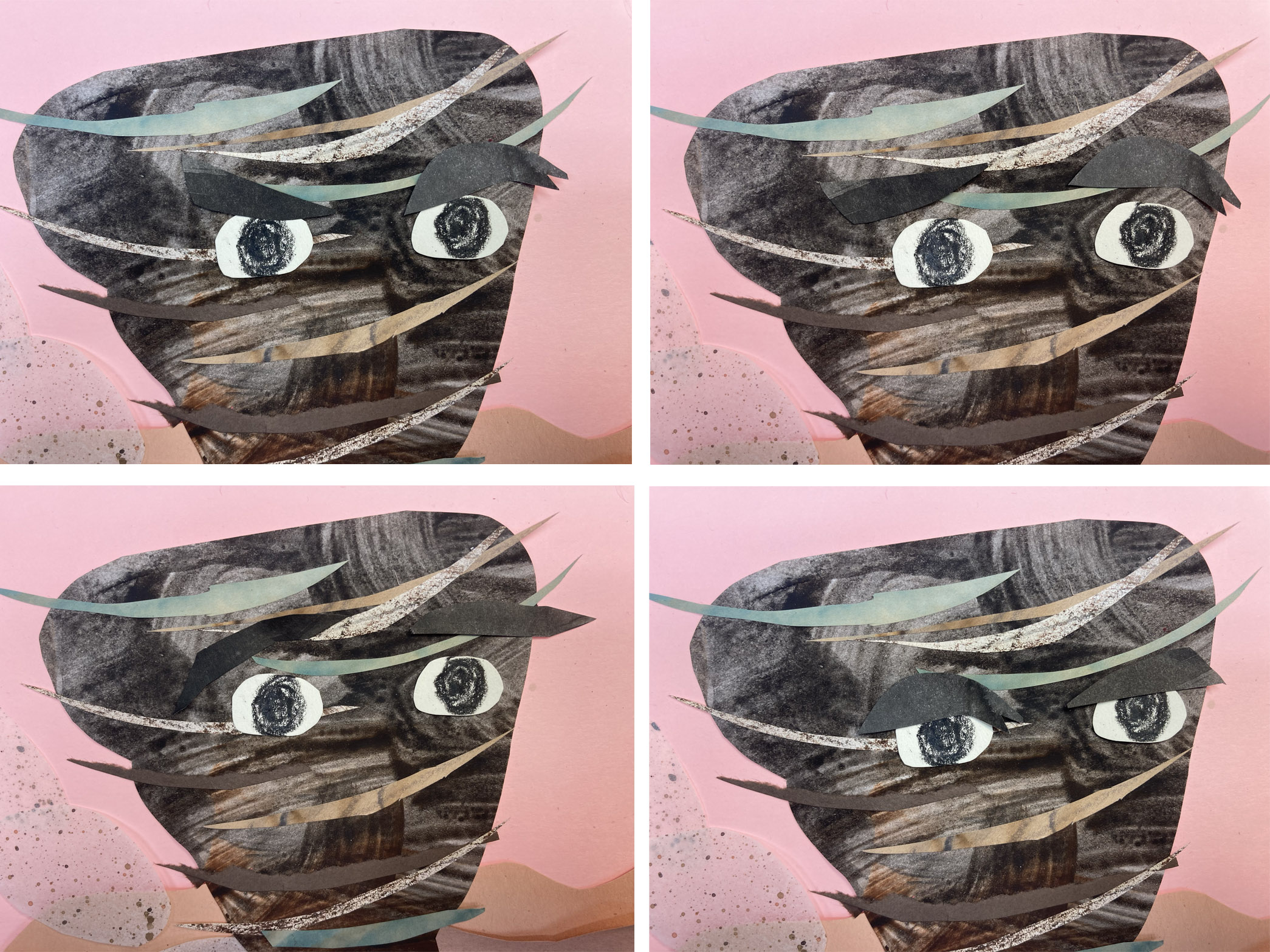
Bonus – how to make a cow.
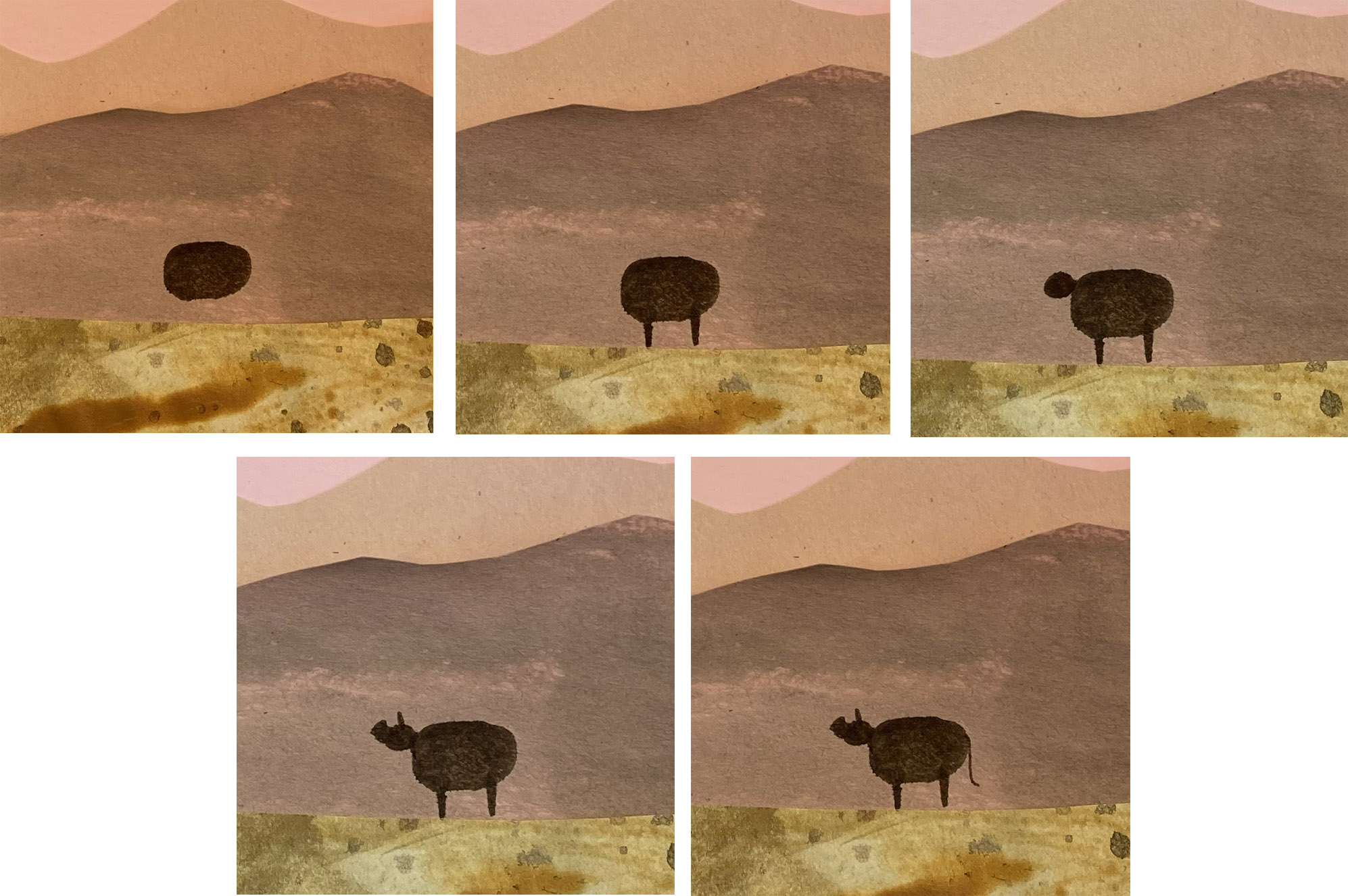
Start with a square-ish oval body
Add 2 lines for the legs
The head is a circle first and then a rectangle on the front
Ears are like leaves and the nostrils are circles.
And the tail is easy.
You can keep going with the process and add as much as you want to the picture. I find the layering process of working from back to front really helpful for grounding a basic composition. It can also be applied to really any scene or setting. Hopefully the process and results feel confidence inspiring, attainable, and satisfying to look at.

Books and Resources

TeachingBooks personalizes connections to books and authors. Enjoy the following on Drew Beckmeyer and the books he’s created.
Listen to Drew Beckmeyer talking with TeachingBooks about the backstory for writing I Am a Tornado. You can click the player below or experience the recording on TeachingBooks, where you can read along as you listen, and also translate the text to another language.
- Explore a Story Map and lesson
- Watch an interview with Drew Beckmeyer
- Discover Drew Beckmeyer’s page and books on TeachingBooks
- Visit Drew Beckmeyer on his website, Instagram, GoodReads, and, LinkedIn.
Explore all of the For Teachers, By Teachers blog posts.
Special thanks to Drew Beckmeyer and Simon & Schuster for their support of this post. All text and images are courtesy of Drew Beckmeyer and Simon & Schuster, and may not be used without expressed written consent.



Leave a Reply